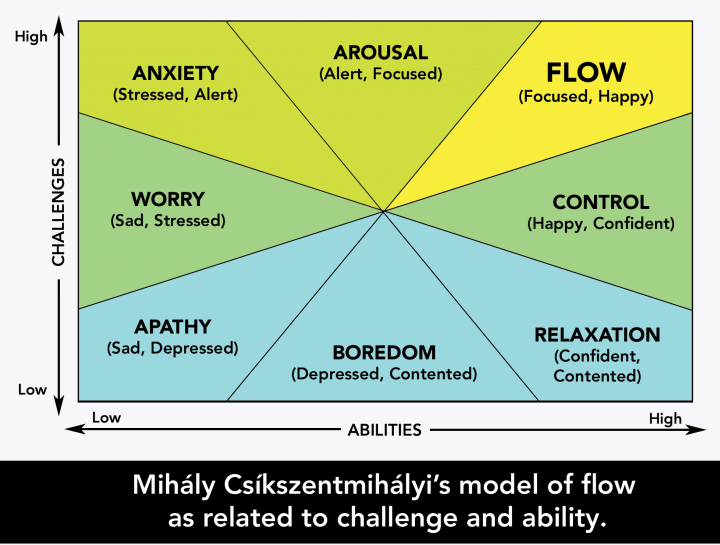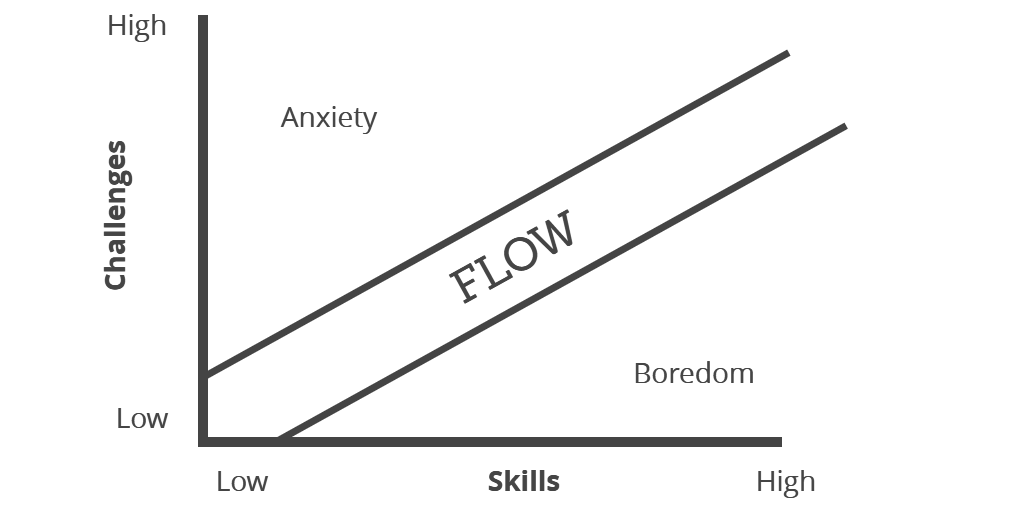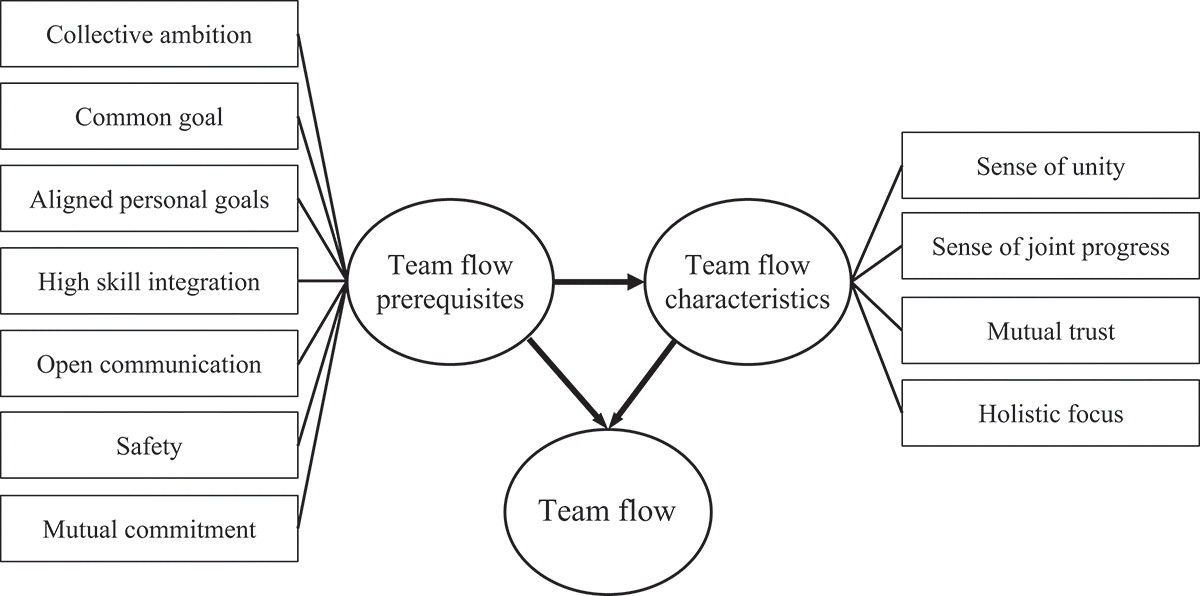Many companies who have shifted to remote working have observed lower productivity since their employees are used to the conventional ideas of problem-solving by increasing systems, processes and measurements. It has been understood that defining a clear set of expectations for the employees helps them get a better idea of the deliverables required of them. This further establishes a sense of purpose to their work, which helps employees understand and feel a part of the big picture, (especially in these times when people can easily feel isolated), which acts as a motivating factor for them.
Finding flow in Work (when there’s no Flow around the world!)
Productivity during remote-working remains a genuine concern. Be it distractions at home, lack of focus, a sense of anxiety or “Zoom fatigue”, the factors affecting productivity are umpteen. Some suggest breaking down the day into small pockets of time to increase productivity. At the start of every small new session, a lot of time is spent struggling to sit and focus once again. It gives a feeling of being interrupted by another interruption, which is definitely not ideal. Thus, it is extremely essential that one tries to create value during these small intervals, or pockets of time, during the day. It can also be possible by using them as an opportunity to receive feedback, or connecting to other associated people.
 Img Src: Positivepsychology.com
Img Src: Positivepsychology.com
According to the famous Hungarian psychologist Mihaly Csikszentmihalyi, one phenomenon at the workplace linked to productivity, motivation and company loyalty is “Flow”. Flow is essential in everyone’s lives. We use the term and concept of Flow in our day-to-day lives so often, that it has become a part of our daily routine now. Flow is related to overall well-being and satisfaction.
Especially in knowledge work, where work is “hidden” in people’s minds, computers and in written/ unwritten minutes of innumerable meetings that we often become a willing victim of, it can be shocking to learn how much any work deliverable – a document or report, a software feature, an employee appraisal, a loan application, a support ticket – and many more – stays in a ‘waiting’ state for some work to happen on it. Most knowledge teams report that “wait time” can be as high as 75-85% of the total time it takes to complete any work, which means there is a very low level of Flow in such environments.
Some ways to achieve flow in your work environment are – creating value at every given stage through which your work passes, becoming oblivious to interruptions, receiving constructive feedback at regular intervals, while also creating an ecosystem of work which regularly produces value while allowing every worker to be a manager of their own tasks. Receiving constant feedback is, in fact, a sign of being in flow.
As one might be wondering, getting into such a zone does require some efforts. According to Mihaly Csikszentmihalyi’s book ‘Flow’, some factors which accompany Flow are: setting clear goals, focusing on getting the task done, gaining control over your tasks, merging awareness and action while working, and providing your employees an environment that strives to achieve a balance between their abilities/skills and the level of challenge that their tasks represent (see figure below). Not only do these factors help in achieving greater Flow, they are also intrinsically rewarding, which propels people to greater efforts. A ten-year long study at Mckinsey & Co. found that teams working in Flow were found to be 500% more efficient. That statistic speaks volumes.
Flow is directly responsible for increasing productivity not just for teams, but for entire organizations. When a team achieves flow, it achieves increased awareness about what the work is, finding it easy to concentrate and shut out distractions, thus increasing productivity. Productivity, in its true sense, is attained when one achieves the set goals, while accomplishing important tasks.
Img Src: Tandfonline.com – Taylor & Francis Online
One of the most important parameters which affects productivity is how much multitasking people do, represented by Work in Progress (WIP). Recent studies in the last nearly 10 years have shown that the human brain is incapable of multitasking – and that multitasking actually reduces the quality of work. Using a virtual Kanban system and limiting the Work in Progress (using WIP Limits) reduces multi-tasking, improves throughput and teamwork, and thus increases productivity.
There are many tools which help in improving productivity, Kanban being an important one. While Kanban was introduced by Taiichi Ohno in the manufacturing industry, it is David J. Anderson who was the first to apply the concept to knowledge work in general in 2004. A Kanban system helps manage flow by highlighting the various stages of the workflow and the status of work in each stage. Kanban’s key principles are visualizing your work, limiting WIP, and focusing on finishing and delivering value. Kanban helps in limiting the number of open tasks at any given time in any stage. WIP Limits in a Kanban system encourages team members to complete the work they have already started, before taking up new work. By following these principles, teams are able to focus on the tasks at hand and completing them at regular intervals, thereby achieving Flow.
In these challenging times, companies would do very well by focusing on helping their teams and employees be ‘in full-flow’ as much as possible. Providing them with a virtual Kanban system might be a good first step!
References:
- https://www.forbes.com/sites/johnhall/2020/10/04/covid-19-got-you-and-your-productivity-down-heres-how-to-get-back-up/?sh=1525195b5233
- https://www.ted.com/talks/mihaly_csikszentmihalyi_flow_the_secret_to_happiness
- https://www.ted.com/talks/diane_allen_how_to_find_flow_and_lose_yourself_in_it
- https://www.bbc.com/worklife/article/20190204-how-to-find-your-flow-state-to-be-peak-creative
- https://www.mckinsey.com/business-functions/organization/our-insights/increasing-the-meaning-quotient-of-work
- https://zenhabits.net/guide-to-achieving-flow-and-happiness-in-your-work/








